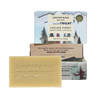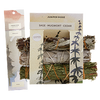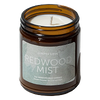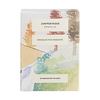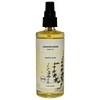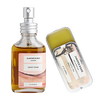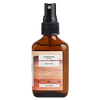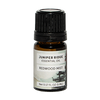
Sand to Snow is the newest National Monument, proclaimed by President Obama in 2016, in the stunning San Bernadino mountains. True to its name, the Monument starts in the lower, near-sea level desert dune areas near the Coachella Valley and reaches a peak of 11,500 feet at San Gorgonio Mountain.
This kind of topography only occurs in one place: the deserts east of Los Angeles. In one day, you can start on the hottest place on Earth and hike up, up, up into the alpine zone where it’s too cold for plants to survive. (An elevation gain of 10k feet is a rough day of hiking, but it’s possible.)
The remarkably diverse ecosystem is what makes this place special and unique. Starting in the lower elevations of the Coachella Valley, the plants have adapted to extreme heat – Ocotillo, Cheesebush, Desert Lavender. As you move up the slope, you get to the heart of the Mojave ecosystem – Joshua trees, Creosote, Burrow Weed, Piñon. Even higher than that you’ll find remnant Coastal Chaparral (isolated plant communities left over from the last Ice Age!), White Sage, Malosma and Sagebrush. Keep climbing and you’ll be among Sierran Jeffrey Pine, Douglas Fir, White Fir, Red Fir and Whitebark Pine forests. In the alpine zone, you’ll find only matting plants like Juniper and Manzanita. Above that? It’s called the Martian zone. Plants just stop growing there.
It’s a worldwide phenomenon that wherever the average temperature drops below 45 degrees, almost all terrestrial plant life stops. Some plants have adapted strategies like heat trapping (a plant’s personal space heater), but basically, this rule holds true all around the world. Since the Pacific Northwest is farther north and generally cooler, this cutoff line occurs right around 7,500 feet. Comparatively in California’s high crest Sierra country, this ecological boundary occurs around 10,000 feet. Down here in Greater Palm Springs, the cutoff is as high as 11,000 feet. A place this dynamic provides endless discovery for a wilderness freak like me.
This Field Lab creation was a labor of elimination. All those incredible plants I listed above? I selected one or two of them from each unique ecosystem. I hiked up the slope on the Cactus to Clouds Trail. I thought about the plants you’ll find there and the sensory ecstasy that fills the air…
Cheesebush and Desert Lavender from the low elevations. Creosote and Desert Juniper for the Mojave. White Sage for the Coastal Chaparral. Jeffrey Pine for the lower Sierran elevations. White Fir higher up. I didn’t have anything from the upper subalpine areas. Maybe we’ll do a little matting Manzanita flower gathering next year. Stay tuned!
You’ll only be able to find Field Lab at this year’s Desert & Denim. Why? Our annual Makers’ Carnival in Joshua Tree is located smack dab in the geographic heart of Sand to Snow, Cactus to Clouds country. This is our aromatic anthem rock song to that place; our way of bringing our annual, magical festival into your homes. Come pick up a bottle and breathe in this place for yourself, June 1, 2 and 3 in the High Desert.


